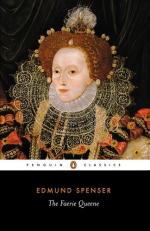437. GREAT ROMULUS, legendary founder of Rome (B.C. 753). See Livy, i, 16.
438. PROUD TARQUIN, Tarquinius Superbus, the last king of Rome. He was banished B.C. 510.
438. TOO LORDLY LENTULUS, surnamed Sura, member of a haughty patrician family, who conspired with Catiline, and was strangled B.C. 62.
439. STOUT SCIPIO, Cornelius Scipio Africanus (B.C. 287?-183?), the conqueror of Hannibal, and self-exiled from Rome. Livy speaks of his inordinate pride, xxxviii, 50.
439. STUBBORNE HANNIBALL (B.C. 247-183), the great Carthaginian general, who died by poison to avoid falling into the hands of the Romans.
440. AMBITIOUS SYLLA (B.C. 138-78), Cornelius Sulla, the Dictator, who died a loathsome death.
440. STERNE MARIUS (B.C. 157-86), after being seven times consul, he was obliged to take refuge from his rival Sulla amid the ruins of Carthage.
441. HIGH CAESAR, Caius Julius Caesar (B.C. 100-44), who was murdered by Brutus and other conspirators.
441. GREAT POMPEY. Cn. Pompeius Magnus (B.C. 106-48). After his defeat at Pharsalia, he fled to Egypt, where he was murdered.
441. FIERCE ANTONIUS, Marcus (B.C. 83-30), the great triumvir, who after his defeat at Actium killed himself in Egypt.
444. THE BOLD SEMIRAMIS, the legendary queen of Assyria.
446. FAIRE STHENOBOEA, the wife of Proteus, who on account of her unrequited love for Bellerophon, died by hemlock. Aristophanes’ Frogs, 1049 seq.
448. HIGH MINDED CLEOPATRA (B.C. 69-30), the beautiful queen of Egypt, who is said by Plutarch to have died in the manner mentioned.
QUESTIONS AND TOPICS
(Canto V)
1. How did Redcross spend the night before the fight with Sansjoy?
2. Study in detail the fine description of Duessa’s descent to Erebus.
3. What elements of beauty are seen in the description of dawn and sunrise in ii? and compare Psalms, xix, 5. 4. What arbitrary classification of musicians does Spenser make in iii? 5. Who is the far renowmed Queene in v? 6. Describe the joust between the Knight and Sansjoy. 7. Where do you learn of the laws governing such contests? 8. Observe the dramatic way in which Duessa saves Sansjoy. 9. What dramatic stroke in xxvii? 10. Describe Night and her team. 11. Give an account of her descent to Erebus with Sansjoy. 12. What were some of the tortures of the damned? 13. What effect is produced in xxx and how? 14. Point out some instances in which Spenser has imitated Homer—Vergil.
15. Where does he follow the Latin rather than the Greek poets?
16. Why did Aesculapius hesitate to heal Sansjoy? 17. Whom did the dwarf see in the dungeons of Pride? 18. Why did the Knight flee from the House of Pride?
19. Examine the following grammatical forms: maken, l. 22; woundes, l. 400. 20. What figure of speech is employed in xviii? 21. What illustration is used in viii? 22. Find example of balanced structure in vii; alliteration in viii, xv, xviii. 23. Scan l. 23. 24. Note nom. abs. construction in xlv.




